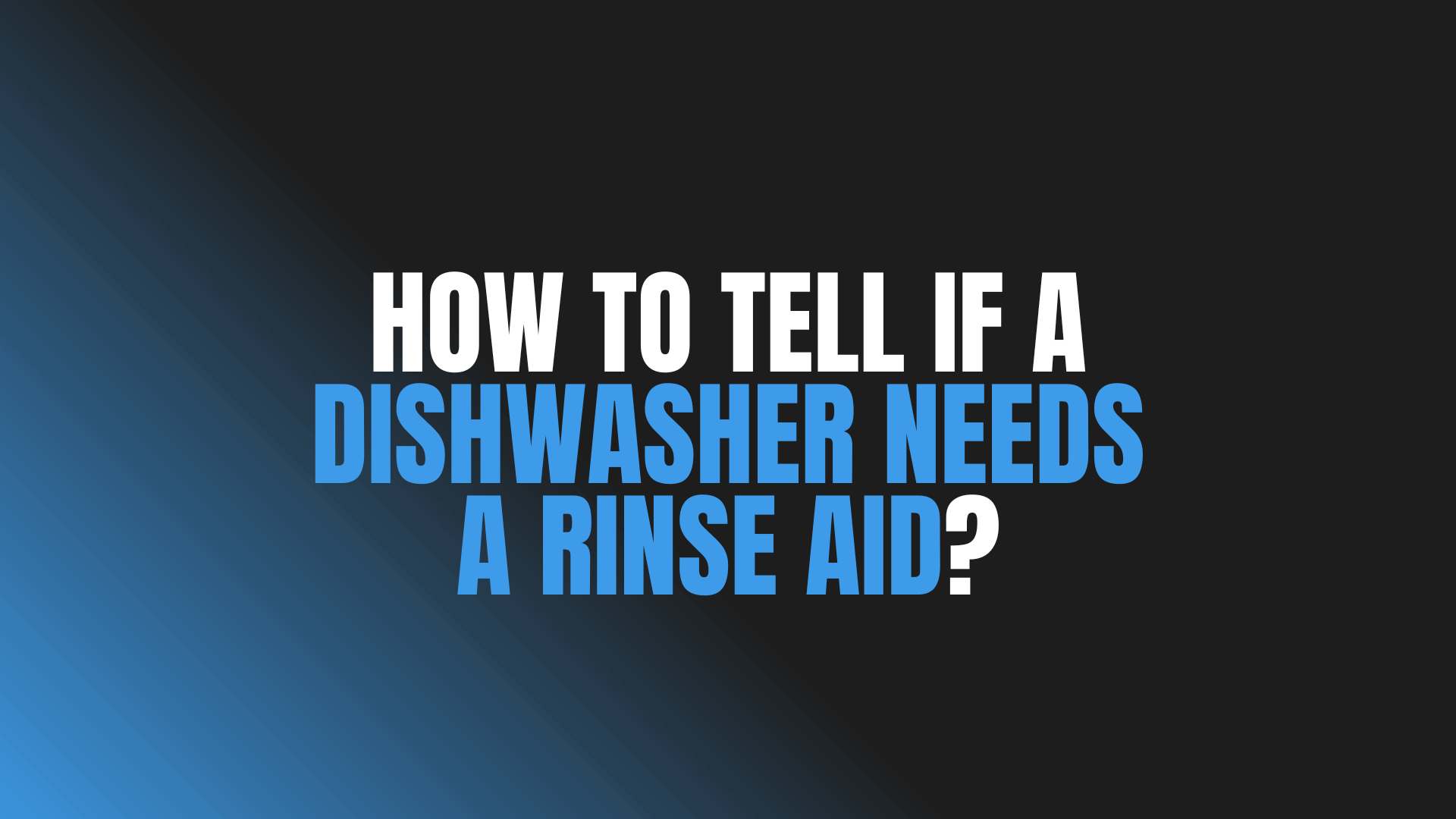
Question: How to Tell If a Dishwasher Needs a Rinse Aid?
Answer: Your dishwasher needs rinse aid if dishes appear spotty, streaky, or filmy after a wash cycle. You may also notice water spots.
Do You Need Rinse Aid for Your Dishwasher?
Clean, sparkling dishes: it’s the dream of every dishwasher owner. But sometimes, dishes emerge cloudy, spotted, or even still wet. You might wonder, “Is my dishwasher broken?” Often, the solution is simple: rinse aid. This article explores how to identify when your dishwasher needs a rinse aid, explaining the signs and providing solutions for optimal dishwashing results. We’ll cover the science behind rinse aid, practical tips for diagnosing the problem, and simple steps to address it. We’ll also debunk common myths about rinse aid and guide you toward achieving consistently clean and dry dishes.
Whether you’re a seasoned dishwasher user or a newcomer, you’ll learn valuable insights into maximizing your dishwasher’s performance and the role rinse aid plays in the process.
Recognizing the Telltale Signs
Several clear indicators signal your dishwasher’s need for rinse aid. Water spots are a primary symptom. These appear as white, chalky residue on your dishes, particularly noticeable on glassware. Another key sign is dishes that don’t dry completely during the cycle. Lingering water droplets on dishes, especially plasticware, suggest inadequate sheeting action, a process enhanced by rinse aid.
Cloudy or streaky glassware indicates a need for rinse aid. These visual cues mean the water isn’t flowing off the dishes effectively, leaving behind residue. If your dishes feel rough or gritty, this also points towards insufficient rinsing, and rinse aid can help.
Click here for more information on kitchen cabinet refacing Toronto
Related Article: What Can I Put in My Dishwasher Instead of Rinse Aid?
Related Article: What Are the Cons of Dishwasher Pods?
Checking Your Dishwasher’s Rinse Aid Dispenser
Locate your dishwasher’s rinse aid dispenser, usually a small, covered compartment next to the detergent dispenser. Open the cap and check the rinse aid level. If the compartment is empty or near empty, refill it following your dishwasher manufacturer’s instructions.
Many dishwashers have an indicator light or dial to signal low rinse aid. Consult your dishwasher’s manual to understand your model’s specific indicators. Maintaining adequate rinse aid prevents spotting and ensures optimal drying performance.
Related Article: What Happens If You Don’t Add Rinse Aid to Your Dishwasher?
Related Article: Do You Put Rinse Aid in the Dishwasher Every Time?
Experimenting to Confirm the Need for Rinse Aid
If you’re uncertain about your dishwasher’s need for rinse aid, run a load without adding any. Observe the results closely. If your dishes come out spotty or wet, this confirms the need.
Next, run a load with rinse aid. Compare the results to the previous load. A noticeable improvement in cleanliness and dryness confirms the effectiveness of rinse aid in your dishwasher.
Related Article: Can I Use Vinegar in My Dishwasher Instead of Rinse Aid?
Related Article: What Happens If You Put Too Much Rinse Aid in the Dishwasher?
Optimizing Your Dishwasher Performance
Water hardness plays a significant role in spotting. Hard water contains high mineral content, which contributes to water spots. Consider a water softener if you live in a hard water area.
Proper loading techniques optimize dishwasher performance. Avoid overcrowding the dishwasher, ensuring water and rinse aid can reach all surfaces. Use the appropriate detergent for your dishwasher type and water hardness.
Addressing Common Dishwasher Concerns
Other dishwasher issues can mimic the need for rinse aid. A clogged spray arm can cause inadequate rinsing. Check and clean the spray arms regularly for optimal water distribution.
A faulty heating element can hinder drying performance. If your dishes consistently emerge wet, regardless of rinse aid use, a faulty heating element might be the culprit.
Related Article: Do I Need Rinse Aid in My Dishwasher If I Use Tablets?
Conclusion – How to Tell If a Dishwasher Needs a Rinse Aid?
Spotting, cloudiness, and damp dishes often signal a simple fix: adding rinse aid. By understanding how rinse aid works and recognizing the signs of deficiency, you can ensure your dishwasher consistently delivers sparkling, dry results.
Regularly checking your rinse aid dispenser and following these diagnostic steps can significantly improve your dishwasher’s performance. Don’t settle for less than perfectly clean dishes – embrace the power of rinse aid for a truly satisfying dishwashing experience.

Blue Malue Get in touch with Blue here.
